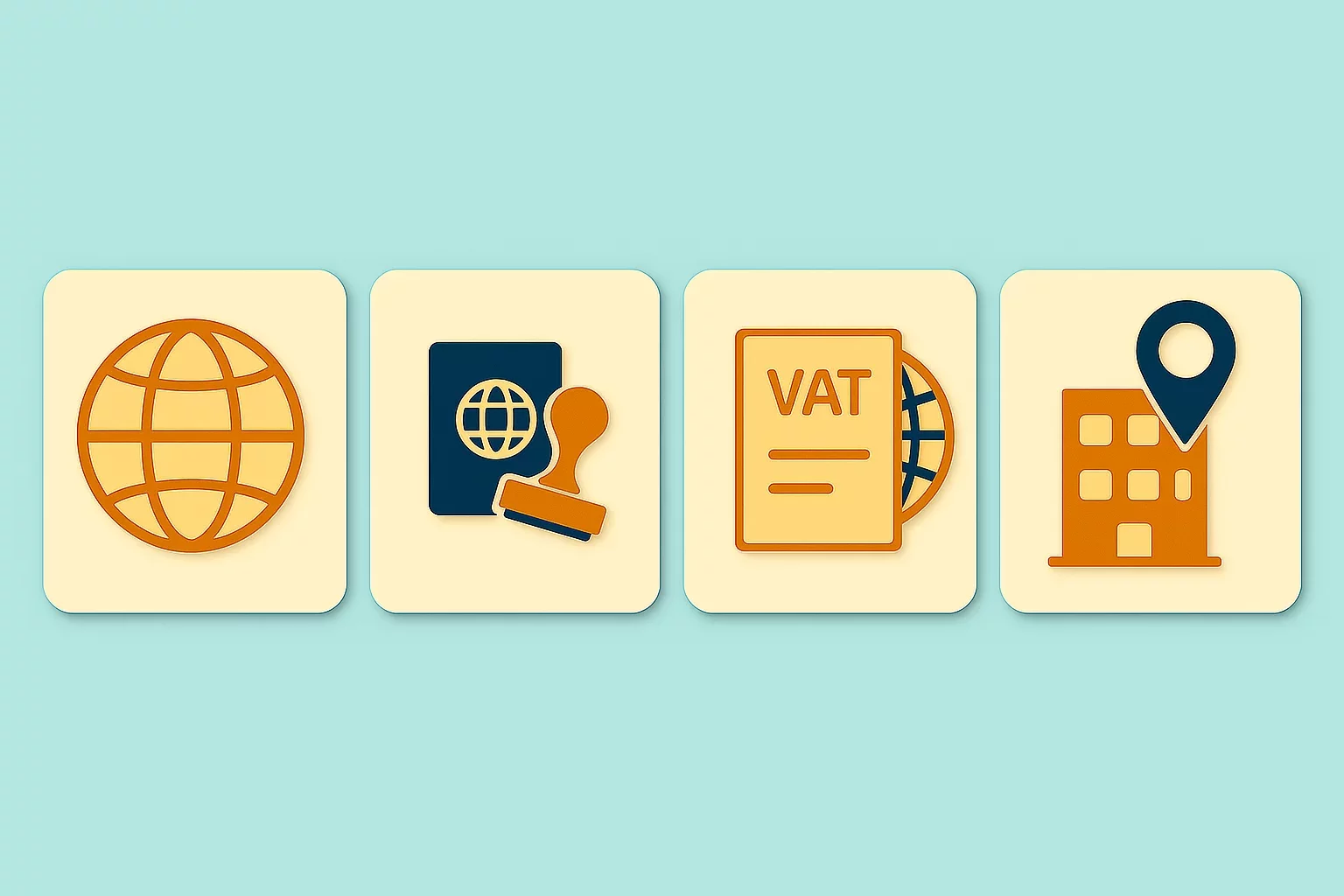The Future of Taxation: How AI Is Reshaping Tax Systems

Summary
Artificial Intelligence (AI) is reshaping taxation by automating routine tasks. It is improving accuracy and streamlining compliance. AI can process large volumes of data with short span of time, help with tax calculations, fraud detection, VAT reclaims, and predict trends. Both tax departments and taxpayers are slowly starting to use AI tools. AI brings many benefits such as saving money, faster processing, and supporting better decisions. However, there are still some concerns on the usage of AI such as poor data quality, bias, and ethical issues. Despite these challenges, the benefits of AI are greater, and ignoring AI in taxation is no longer an option.
Introduction:
Artificial Intelligence (AI) has come a long way, from being just a concept in science fiction to becoming a real part of our everyday lives. It all started in the 1950s with ideas like the Turing Test and the first use of the term “Artificial Intelligence” at the Dartmouth Conference. Although development progress was slow at first, things changed in the 21st century with better computing power and smarter algorithms. Today, AI is used in many areas like personal assistant tools like ChatGPT, self-driving cars, suggesting products to buy online, and to detect frauds in the banking world.
One area where AI is making a big impact is taxation. With tax rules becoming more complex and the amount of financial data growing fast, both governments and companies are turning to AI for help. It’s now used to automate routine tasks, detect fraud, recover VAT, and even support real-time tax compliance. These tools make tax processes faster, more accurate, and more efficient. However, challenges still exist, like making sure the data is clean, and the AI is well-trained. Looking ahead, AI could completely change how we manage taxes and follow the rules.
Key Tax Functions Where AI Can Make an Impact:
AI can help in numerous ways to automate tax tasks, which are currently either manual or semi-manual. One of its biggest strengths is automating routine, repetitive tasks such as data entry, tax calculations, invoice matching, and return preparation. This not only saves valuable time but also reduces human error, allowing tax professionals to shift their focus toward more strategic and value-adding activities. AI plays a key role in predictive planning, helping organizations estimate future tax liabilities and risks based on historical data and current trends. It continuously monitors tax law changes across multiple jurisdictions and automatically updates systems or alerts users, ensuring timely and accurate compliance. AI tools can also run real-time compliance checks, flagging issues early and reducing the need for lengthy manual reviews. By analyzing large volumes of tax and financial data, AI provides smart insights that reveal trends, identify savings opportunities, and improve overall decision-making. It helps in better risk management by spotting potential problems before they become serious and supports audit readiness by maintaining clean and accurate data trails. Another major advantage of AI is its ability to streamline tax workflows, allowing seamless collaboration with other business functions like Finance, Procurement, and Supply Chain, thus embedding tax into core business operations. AI also handles tasks like categorizing products and general ledger accounts, managing tax exemption certificates, and guiding users through filing steps with intelligent virtual assistants. It enables businesses to be more agile, responsive, and confident in a fast-changing regulatory landscape. With these benefits, AI not only boosts efficiency and compliance but also positions tax departments as forward-thinking, tech-savvy partners in business growth. However, to unlock its full potential, it's important to address challenges such as ensuring clean data, training employees, maintaining ethical standards, and providing transparency in AI-driven decisions. When implemented thoughtfully, AI can truly transform tax operations into a smarter, faster, and more reliable function for the digital age.
Benefits of Integrating AI in Taxation:
Integrating Artificial Intelligence (AI) into taxation brings a wide range of benefits that can significantly improve how tax functions operate. One of the biggest advantages is increased efficiency. AI takes over repetitive and time-consuming tasks such as data entry, calculations, and compliance checks. This allows tax professionals to focus on more strategic and value-driven work. AI also enhances compliance by reducing manual errors and ensuring tax filings are more accurate and aligned with current regulations. It processes large volumes of data at high speed, enabling smarter decisions through clear, data-backed insights that help tax teams respond quickly and confidently. In addition, AI encourages innovation by introducing advanced tools and smarter processes that allow tax departments to solve problems in new and creative ways. It also improves the overall user experience. AI-powered chatbots and self-service tools make it easier and faster for employees, clients, or taxpayers to get answers and support. Importantly, AI leads to cost savings by automating tasks that would otherwise require manual work or outsourcing, ultimately improving productivity and boosting profitability. By embracing AI, tax teams can become more agile and effective, stay ahead in a fast-changing digital world, and contribute more actively to the broader goals of the business.
Challenges of Implementing AI in Taxation:
Despite its many advantages, integrating AI into taxation comes with significant challenges that must be carefully addressed. One of the biggest hurdles is ensuring data quality. AI systems rely on clean, accurate, and complete data to function correctly, but tax data is often messy, outdated, or incomplete, which can lead to incorrect outcomes. Training AI is also complicated because tax information is highly complex and constantly changing, requiring well-prepared examples and regular updates to avoid mistakes. Data privacy and security are critical concerns since AI handles sensitive taxpayer information; any breach could damage trust and violate regulations. Another challenge is the potential impact on jobs, as AI automates routine tasks that many people currently perform, raising concerns about workforce displacement and the need for upskilling employees to manage and interpret AI results effectively. Additionally, bias in AI can occur if the training data reflects existing prejudices, leading to unfair or discriminatory decisions. AI systems often operate as “black boxes,” meaning their decision-making processes aren’t always transparent, which can reduce confidence and make it harder to explain outcomes to taxpayers. Ethical considerations are paramount, as AI must act fairly and responsibly when dealing with sensitive tax matters. Finally, maintaining control and reliability over AI is essential because, without proper monitoring and governance, AI systems can behave unpredictably. Addressing these challenges requires thoughtful planning, ongoing supervision, clear policies, and a commitment to ethical standards to ensure AI supports tax functions effectively and responsibly.
Key Success Criteria for AI Deployments in Taxation:
Adopting AI in tax departments is a major investment, and making the wrong decision can have serious consequences. That’s why it’s crucial to regularly evaluate whether AI is delivering real benefits. One key measure is time saved: has AI reduced the hours spent on repetitive tasks like tax calculations and data entry, freeing professionals to focus on more valuable work? Another important factor is whether AI has led to fewer errors, improving the accuracy of tax data and compliance checks. Companies should also ask if AI helps make better decisions by providing insightful predictions and risk assessments. Improved compliance is critical too: is AI identifying risks or mistakes that humans might overlook, helping avoid penalties and keeping up with constantly changing tax laws? Cost efficiency matters as well: has AI cut expenses by automating manual work and speeding up processes? Finally, companies need to consider if AI boosts overall productivity, enabling tax teams to concentrate on strategic initiatives that support broader business goals. By answering these questions, organizations can determine if AI is truly enhancing efficiency, accuracy, compliance, and value in their tax operations.
AI Applications in Taxation:
Key Use Cases:
While AI continues to evolve with ongoing research and development, several AI initiatives are already in use to enhance tax compliance. These solutions are helping organizations streamline tax processes, improve accuracy, and reduce manual workloads. Here are some major AI solutions that are making an impact in the field of tax compliance:
1. Optimizing Travel and Expense (T&E) Tax Reclaims with AI:
SAP Concur, in partnership with AI firms such as Bluedot, are using machine learning and AI to reclaim VAT automatically on travel and expense data, which was previously a manual and error-prone process.
2. AI Use Cases by Tax Technology Firms:
Tax technology companies such as Vertex and OneSource are using AI to simplify and improve various aspects of tax management. One key area is smart search guides, where AI allows users to ask natural-language questions and get quick, personalized answers, making it much easier to find specific tax information. AI also automates product categorization by analyzing item descriptions and assigning them to the correct tax categories, saving tax teams from tedious, manual updates. Some tools even allow offline reviews with AI-powered suggestions for adjustments. Similarly, AI handles GL account categorization, classifying general ledger entries based on their descriptions to streamline financial data management. It also supports exemption certificate management by helping collect, validate, and maintain sales tax exemption certificates, which makes applying exemptions and preparing for audits much easier. Perhaps most powerfully, AI ensures real-time tax compliance by monitoring changes in tax laws across jurisdictions and instantly updating systems, keeping businesses compliant without delay. Together, these applications reduce manual work, improve accuracy, and help tax teams stay current with ever-changing regulations, all while making tax operations more efficient and reliable.
3. AI Use Cases by Tax Accountants:
Tax accountants, both within organizations and in major firms like the Big 4, are increasingly using AI to improve the way they handle tax and audit tasks. One of the biggest benefits is in audit support, where AI can rapidly scan large volumes of financial data to detect anomalies or suspicious transactions, helping auditors work faster and more accurately, as seen in tools like KPMG Clara and EY’s AI audit platform. AI also plays a key role in tax overpayment checks, analyzing past tax payments and forecasting future liabilities to ensure accurate payments and avoid unnecessary overpayments. Another impactful use is in invoice and tax record matching, where AI automatically reconciles invoices with tax returns and financial records, quickly identifying any mismatches or errors. Automated tax filing is another major advancement. AI categorizes transactions, calculates taxes, and prepares returns based on the latest regulations, reducing manual effort and ensuring accuracy. Through Robotic Process Automation (RPA), AI-powered bots take over repetitive tasks like data entry and report generation, freeing accountants to focus on higher-value analysis and strategy. Risk assessment tools powered by AI can analyze historical data to detect early signs of fraud or compliance issues, enabling proactive management. In the area of predictive analytics, AI helps forecast trends, allowing firms to provide clients with better financial advice around budgeting, cash flow, and planning. AI-driven chatbots also improve client service by instantly answering common tax questions, as seen in solutions like PwC’s Digital Tax Assistance. Lastly, transfer pricing, a complex, globally regulated area, is being transformed with AI tools that analyze cross-border transactions and tax laws to design more efficient pricing strategies, using platforms such as Deloitte’s TP Digital DoX, EY’s Transfer Pricing Engine, and KPMG’s TPEngine. Together, these AI applications help tax professionals work more efficiently, reduce risk, enhance compliance, and deliver smarter, data-driven services to their clients.
4. AI Use Cases by Tax Authorities:
Tax authorities across the globe are increasingly turning to AI to modernize their operations, improve compliance, and offer better services to taxpayers. One major innovation is the use of virtual tax assistants, which help taxpayers with filing and general inquiries in multiple languages, easing the burden on call centers as seen in countries like Singapore and Korea. AI is also being used to guide users through tax filing and payments, helping reduce errors and ensure forms are completed correctly. In places like France, AI is supporting automated email replies, drafting responses to routine taxpayer questions so officers can review and respond faster. AI’s strength in analyzing large volumes of data is being used for fraud detection, spotting suspicious transactions and unusual patterns much quicker than traditional methods. For audit and investigation support, AI helps identify data inconsistencies and flag high-risk cases, making the audit process more focused and efficient. Tax laws are often complex, but AI is helping both officials and taxpayers by simplifying legal language and making filing procedures easier to understand. It also enhances decision-making by automating repetitive tasks, giving officers more time to focus on strategic work. AI even delivers personalized taxpayer support, sending reminders and recommendations tailored to each individual’s data, which improves compliance and user satisfaction. Overall, AI is helping tax authorities build more transparent, efficient, and responsive systems, reducing manual workloads while strengthening oversight and public trust.
Concussion:
AI is no longer a futuristic concept in the world of taxation; it’s already making a real difference. From reducing manual work and improving accuracy to helping professionals make smarter decisions, AI is changing how both companies and tax authorities work. It’s allowing tax teams to move beyond routine tasks and focus on more strategic, meaningful roles. For governments, AI is making tax systems more efficient and user-friendly.
However, AI still comes with its own challenges like making sure the data is reliable, addressing privacy and ethical concerns, and ensuring people have the right skills. Hence, organizations need to implement it thoughtfully and responsibly.
As technology continues to evolve, those who adapt and embrace it will be better prepared for the future. Tax is becoming smarter, and this is just the beginning.
References:
[1]. Goyal, A. (2025). The Impact of Artificial Intelligence on Taxation: The Role of AI and Key Use Cases. International Journal of Science and Research (IJSR), 14(5), 1213-1220. https://www.ijsr.net/getabstract.php?paperid=SR25518190955 https://www.doi.org/10.21275/SR25518190955
[2]. Steph Phenix [Author], SAP Concur [Online], AI and Tax Strategy [Title]: Available at: https://view.highspot.com/viewer/6d561a4c254c5c90bc2cc9bb474a0f17
[3]. Multiple Authors, Deloitte Website [Online], Tax Transformation trends 2025 [Title]: Available at:
https://www.deloitte.com/global/en/services/tax/research/tax-transformation-trends.html
[4]. Alex Shashkevich [Author], https://news.stanford.edu/ [Online], Stanford researcher examines earliest concepts of artificial intelligence, robots in ancient myths [Title]: Available at:: https://news.stanford.edu/stories/2019/02/ancient-myths-reveal-early-fantasies-artificial-life
[5]. Multiple Contributors, https://en.wikipedia.org/ [Online], AI winter [Title]: Available at: https://en.wikipedia.org/wiki/AI_winter
[6]. Unknown Author, International Monetary Fund [Online], How AI Can Help Both Tax Collectors and Taxpayers [Title]: Available at:: https://www.imf.org/en/Blogs/Articles/2025/02/25/how-ai-can-help-both-the-taxman-and-the-taxpayer
[7]. Thomson Reuters Tax & Accounting [Online], How AI transformed the tax and accounting profession in 2023 [Title]: Available at:: https://tax.thomsonreuters.com/blog/how-ai-transformed-the-tax-and-accounting-profession-in-2023/
[8]. Randy Carpenter[Author], Daren Campbell [Author], https://www.ey.com/ [Online], Tax transformation: Adopting AI to drive efficiencies [Title]: Available at:: https://www.ey.com/en_us/insights/tax-compliance/ai-and-the-transformation-of-tax-compliance

More News from World
Get real-time updates and developments from around the world, keeping you informed and prepared.


















-7xdqdopxl6.webp)



-a9bz8kz2cs.webp)































